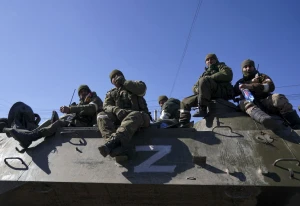
Kakhovka reservoir is shallow: water intake for NPPs and utilities impossible - Ukrhydroenergo chief
The water level in the Kakhovka Reservoir as of the evening of June 8 is 12.5 meters, suppressing the so-called "dead point" below which water intake is impossible
Ihor Syrota, CEO of Ukraine’s hydropower company Ukrhydroenergo, shared the information on the United News national telethon, Interfax-Ukraine reports.
"The water level has dropped to 12.5 meters, which is below the "dead point" of 12.7 meters. At this level, it becomes impossible to supply water to settlements and the ZNPP," Syrota said.
He added that the water level drop is likely to stop at approximately 3 meters.
"If the dam in the lower section is completely destroyed, the reservoir's depth will decrease to a maximum of three meters, and its width will shrink from the previous 3.5 kilometers to approximately 1-1.2 kilometers. As a result, the reservoir will return to the original Dnipro riverbed, as it was before the reservoir's construction," explained the Ukrhydroenergo head.
Syrota added that if the water level is currently dropping at a rate of 1 meter per day, this decline will last for another 7 to 8 days.
Syrota added that if the reservoir drops by 1 meter per day, as it does now, it will last another 7 to 8 days.
Half of the Kakhovka HPP is already submerged, while the remaining half is approximately 70% underwater. The soil insert between the gateway and the station is also submerged and erodes.
-
On June 6, Russian occupying forces blew up the Kakhovka HPP.
-
Ukraine’s state power company Energoatom stated that the destruction of Kakhovka HPP could have negative consequences for ZNPP, but the situation is currently under control.
-
At Zelenskyy's call, Rafael Grossi said he would lead the next IAEA mission to ZNPP after Russia's explosion of the Kakhovka HPP.
-
On June 7, the mayor's office in Enerhodar said that residents should leave the city, as the situation at the plant could get out of control at any time.
-
The IAEA is concerned that ZNPP will no longer receive water for cooling from the Kakhovka HPP reservoir. The plant is constantly replenishing its water reserves while it is still possible. At maximum capacity, the reservoirs will be sufficient to provide the plant with the water needed to cool the reactors and spent fuel for several months.
- News












































